EagleTac D25A Clicky – Flashlight Review (CREE XM-L2 U2)
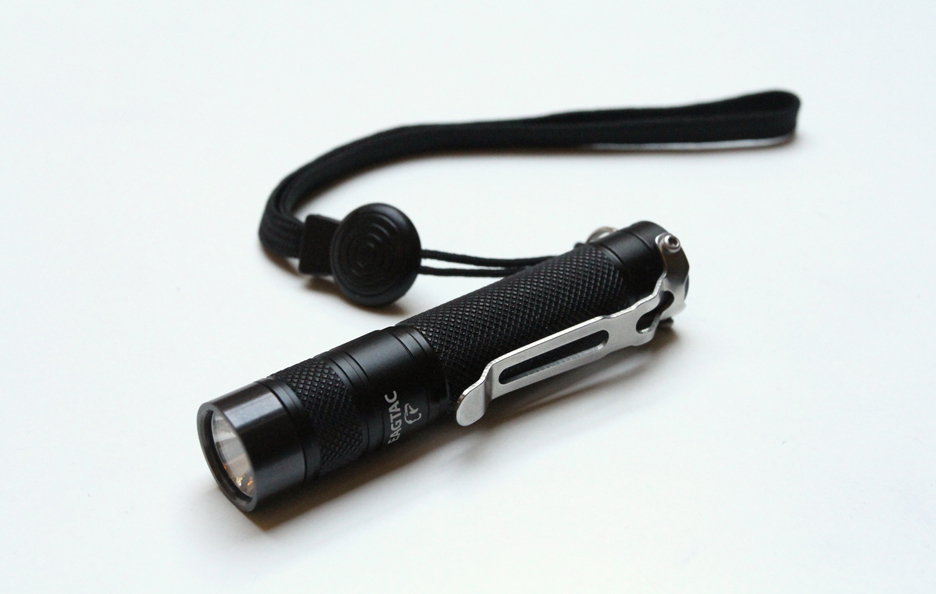
Well, I’ve been on a bit of an AA binge the last few months, so I thought I’d review a few of my recent purchases starting with the EagleTac D25A Clicky. Of all my lights (not just the AAs) this is my most carried and goes with me pretty much everywhere due to its size. Even if I’m carrying a big powerful CR123 guzzler, this little guy will still be on me somewhere.
I’ve been carrying a Fenix LD15 for a good long while now (great light) but have always wished it was a tail clicky instead of head twisty. Twisting the head back and forth to access the different light levels can be fiddly and I’ve had a couple of accidental activations that have left me with a drained AA right when I needed it. So the D25A Clicky was intended as a replacement for my LD15 and it certainly didn’t disappoint. Here is what I’ve found…
This was my first EagleTac light, so I had no expectations as to build quality. Going by the price of the D25A Clicky (around $52) I was hoping for Fenix calibre, although the multiple levels, strobe functions and relatively high output made me slightly dubious. Well, it is a nicely put together light. The body is HAIII hard anodisation aerospace aluminum with a proper glass lens and it’s all IPX8 standard waterproof. Very nice knurling, no blemishes and very solid in the hand. It also features a very sturdy pocket clip that I find very useful (this can be removed).
Close up on the finish of the D25A:
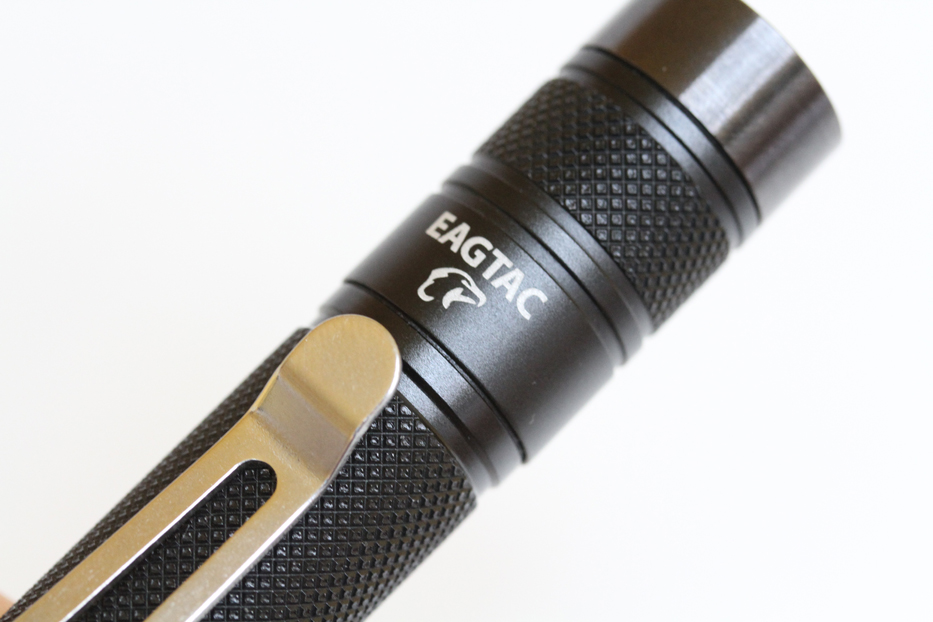
Having said that, I think Fenix just edge it in the quality department for me. It’s the little details but they make all the difference; the EagleTac’s walls feel slightly thinner, the O-rings are less substantial, no anodizing on the threads…oh and a shoddy lanyard! The lanyard shown attached to my D25A in the photos is actually a Fenix lanyard I use instead…far superior in my book.
EagleTac lanyard above, Fenix lanyard bellow:
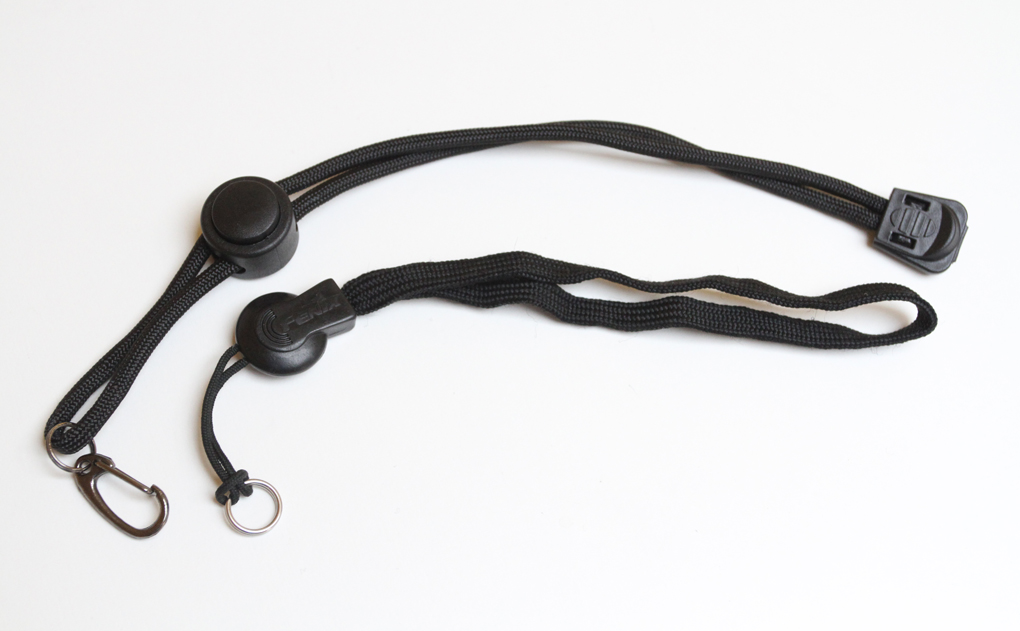
First off the lanyard feels way too busy for a light this size but where it fails for me is when you attach it to the D25A…the clasp makes for an awkward fit through the lanyard hole and the split ring is poor quality. By poor I mean I would in no way trust my light to it; the Fenix lanyard can be yanked on all day long, but one hearty yank on the EagleTac lanyard and I bent the split ring wide open. Off to the bits box it went and I attached a Fenix lanyard instead (the D25A is way too nice to be ignored just because of a lanyard). It seems bizarre EagleTac would skimp on the lanyard when they supply such a high quality belt pouch…
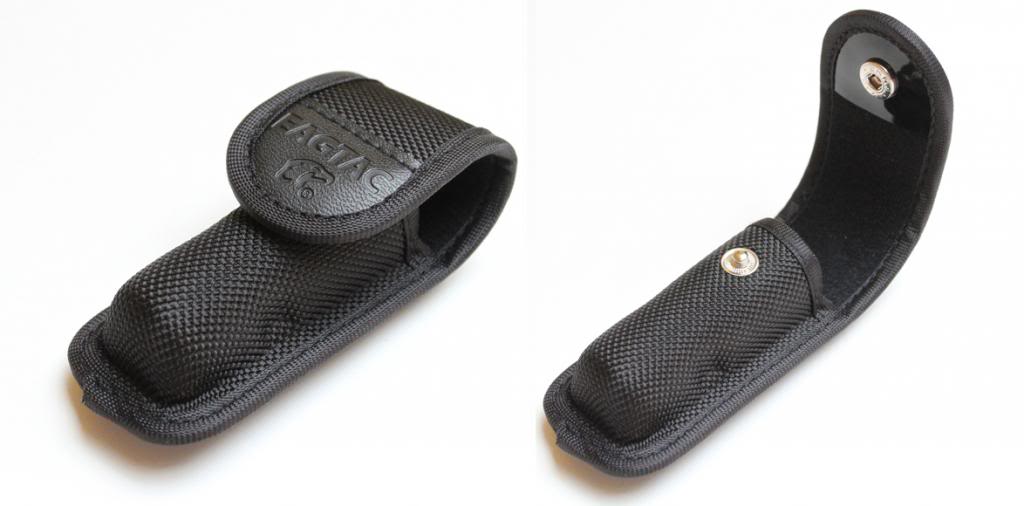
…now I don’t like solid pouches and will never use it for its intended purpose (I much prefer a soft nylon sheath) but that is not to deny its quality. Solidly made and flawlessly finished. I was amazed it was a freebie on such a small light (you get nada with the LD15).
With the negatives out of the way, I’d like to say that from here on in the D25A blew me away and has become my most pocketed light. Despite a cigarette paper less fit and finish it manages to pretty much smash the LD15 overall.
Just a pinch larger than the Fenix LD15 (and at 24g just 3g heavier):
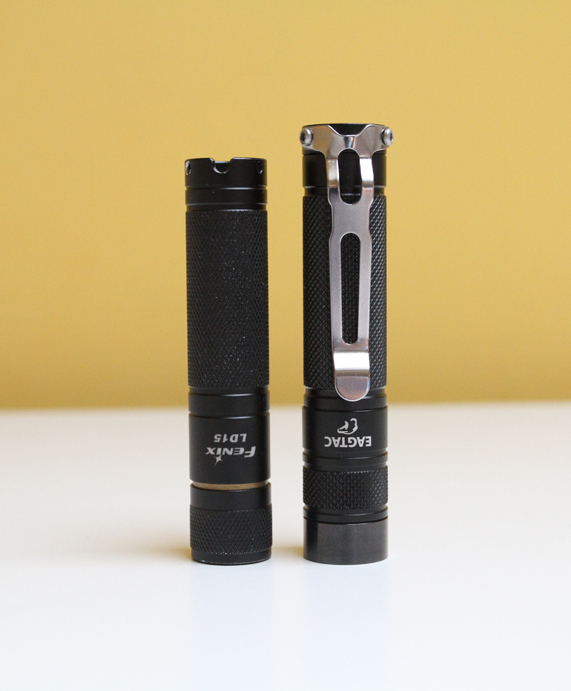
Considerably smaller than your average multimode tail clicky AA (Fenix LD12 shown below):
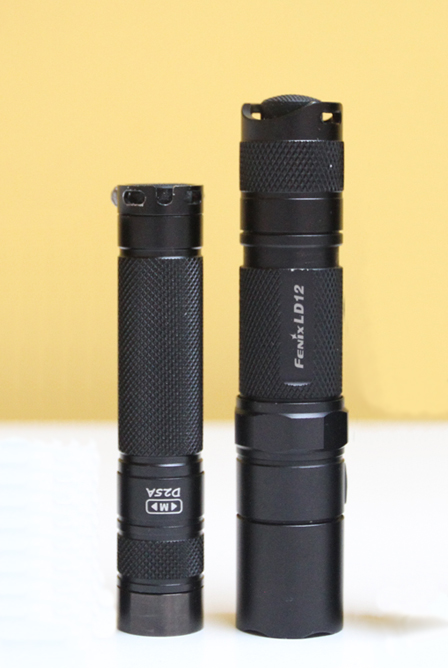
Here’s one last comparison to an old classic who’s size most should be familiar with (Surefire 6PLED):
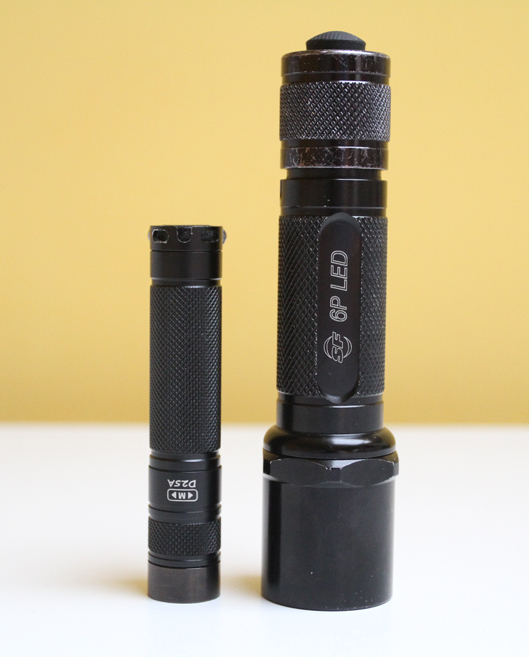
In the hand:
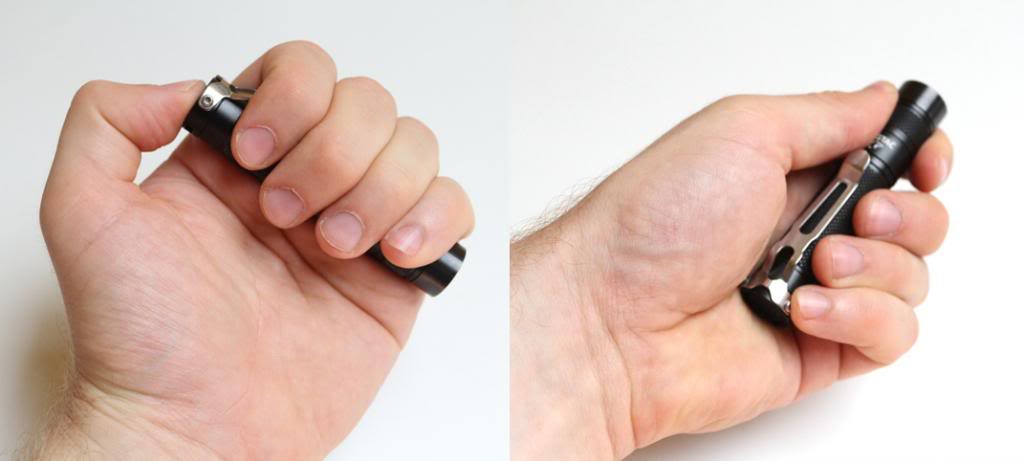
The D25A has multiple modes and is operated by both twisting the head and a tail switch. The tail switch feels well made and responsive (also capable of perfect wobble-free tail standing)…
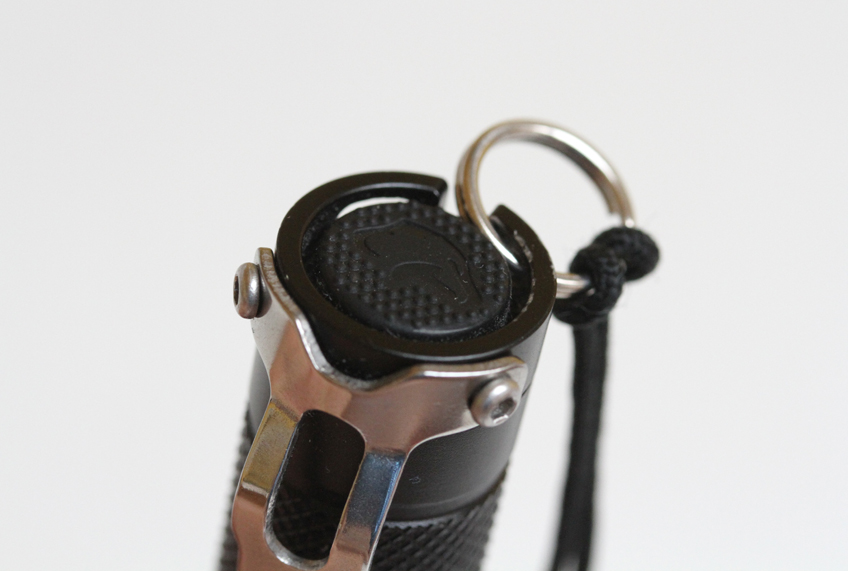
…With the head firmly tightened a full click of the tail switch activates a Turbo mode of 141 Lumens (this is a reverse clicky, so there is no half press for momentary on). Subsequent soft presses of the tail switch flick between Turbo and strobe, full press again to switch off.
Slightly loosening the head allows for the sub modes to be accessed. When the head is in the loosened position a full press will bring the light on in low mode at 4 lumens or 0.5 lumens moon mode (rapidly tightening and loosening the head 3 times in a row when in low mode toggles moon mode on and off. The D25A will remember the mode you have selected letting you have your low permanently set to moon mode). Subsequent soft presses of the tail switch then cycle through medium mode at 20 lumens (or 10 lumens moon mode),
Subsequent soft presses of the tail switch then cycle through medium mode at 20 lumens (or 10 lumens moon mode), high mode at 85 lumens, then back through low, medium and high again, before progressing through several strobe, SOS and beacon modes.
This diagram from the EagleTac website illustrates this far more clearly than my gibberish:
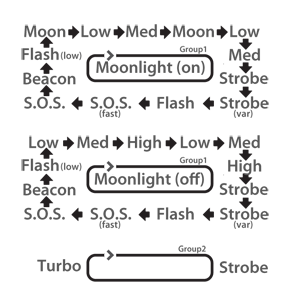
I find the wide range of outputs fantastic and the bells and whistles are always fun to play with too! I always have moon mode selected, letting me go from 0.5 lumens right up to 141 depending on my needs. After a quick play the interface becomes second nature and the soft pressing feels particularly lovely.
Here is the CREE XM-L2 U2 that delivers all those lumens (This is the Cool White version, also available is the Neutral White XM-L2 T6 which gives 7% less output than it’s Cool counterpart):
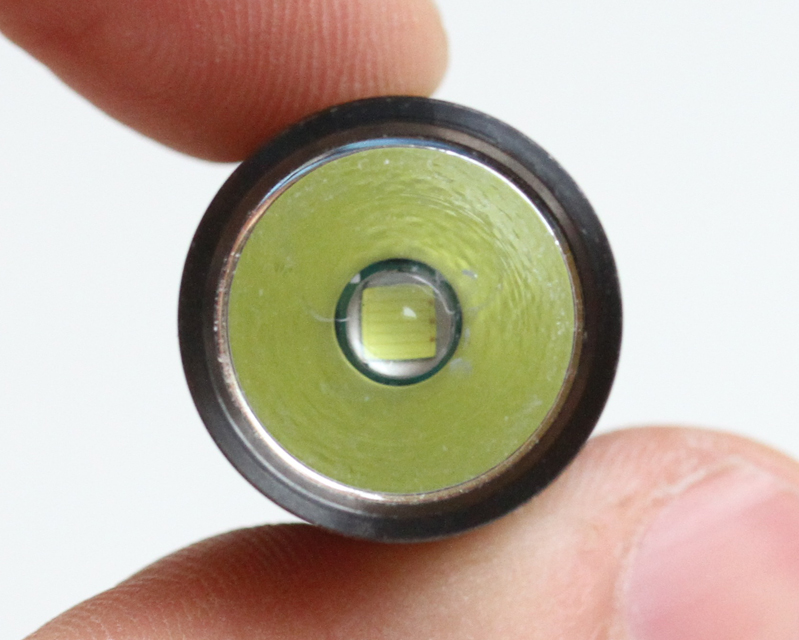
Note the ‘very light orange peel aluminum reflector.’ It does indeed have a ‘very light’ orange peel texture and this produces a nice clean beam, with a noticeably smoother transition between spill and hotspot than the LD15. Constant current regulation means no pulse-width modulation.
Center lux: 800 lux
Center spot angle: 17°
Spill light angle: 74°
Beam distance: 62 yards / 57 meters
Runtimes on Eneloops:
Turbo – 1.3hrs
High – 2.5hrs
Medium – 20hrs
Low – 150+hrs
The D25A Clicky also can be whacked into direct drive by a 14500 li-ion getting 750 lumens out of it apparently! Eagletac recommend you only do this for a maximum of 5 minutes at a time and ‘blow cool air towards the light’ Good luck! I’ve not tested this yet but it sounds fun so I’ll try to get some direct drive beam shots up when I get chance
Speaking of beamshots here is the D25A compared with the LD15 and the larger single AA Fenix LD12…
Close up indoors (far wall at approx 20ft):
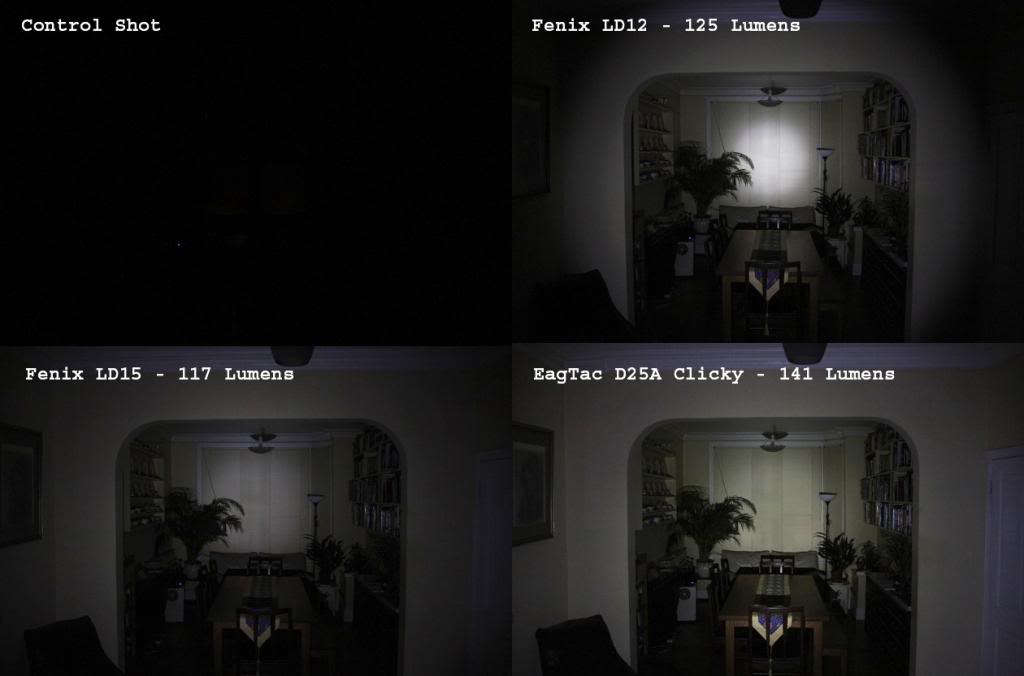
It has a pretty good balance between flood and spill for such a small light, outperforming the LD15 and easily out-spilling the throwier LD12 at this distance. The stated lumens also seem pretty accurate. Note that even though this is the Cool White version the beam is noticeably warmer than both of the Fenix lights (it has a pretty yellow tint if you ask me). You can also see that the LD15 has a less bright but more distinct hotspot, the transition between flood and spot far smoother on the D25A.
A little more distance outdoors (tree at approx 50ft):
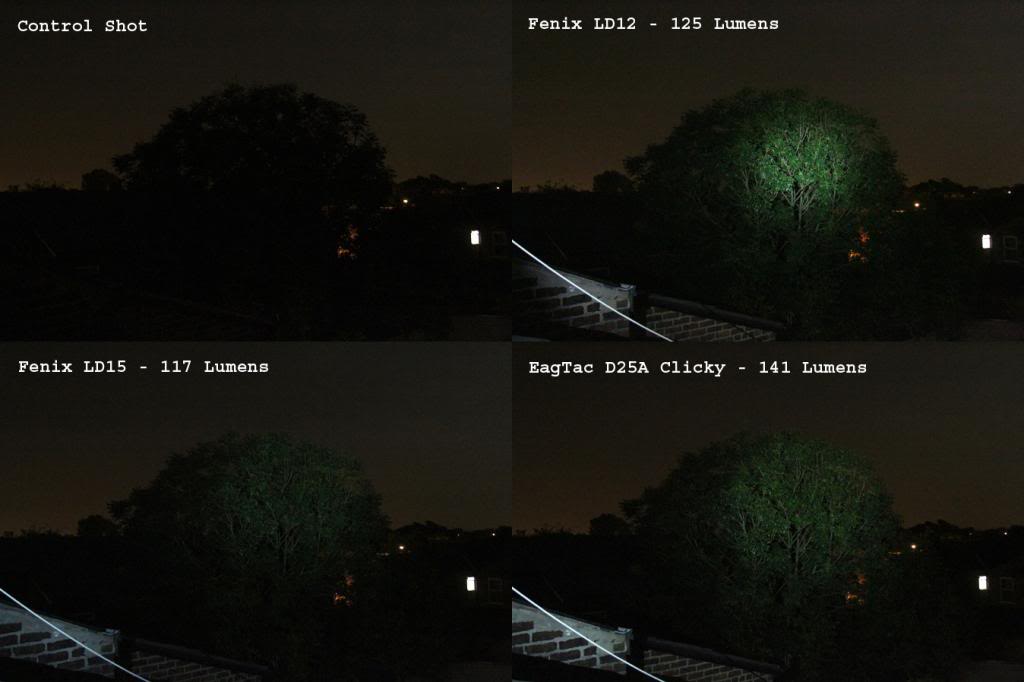
The D25A is still just slightly floodier than the LD12 but suffering with throw a bit here out over 50ft, lacking the LD12’s piercing hotspot. But then the D25A is by no means a dedicated thrower with a deep reflector…its a tincy wincy AA pocket light (easily one of the smallest with a tail clicky) and I’m certainly impressed. Not sure how it would do out over the claimed 57 meters (187 ft) but I’ll try to get some beamshots if the opportunity presents itself.
So there you go…if you’re after an LD15 sized tail clicky you won’t go far wrong with this. It has endured daily carry now for a few months, suffering plenty of drops, dings and being constantly sat on in my back pocket and so far it’s fairing tremendously well. Works first time every time with no weird jumping between modes and flickery activations that I have found on some hi-tech 2 bazillion multi-mode lights I’ve used before. I certainly wouldn’t want to give up the pocket clip or the tail switch now I’ve carried this.
Well, I hope someone finds this useful! Here is one last pic to end on…
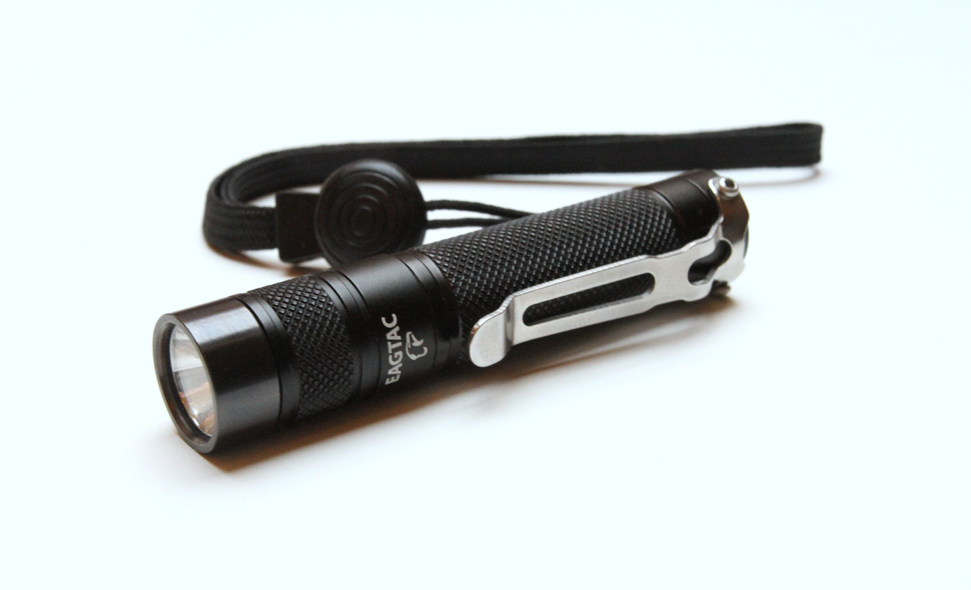
Thanks to Uke and ©BritishBlades for allowing us to use this article
If you have any comments then please drop us a message on our Outdoor Revival facebook page
We love reviews on Outdoor Revival and we’ll be bringing you a lot more over the coming months, if you enjoy reviewing kit and would like to submit reviews to us, let us know on our FB page, we’re happy to receive any article or review submissions, we’d love to hear from you.
Outdoor Revival – Reconnecting us all to the Outdoors
